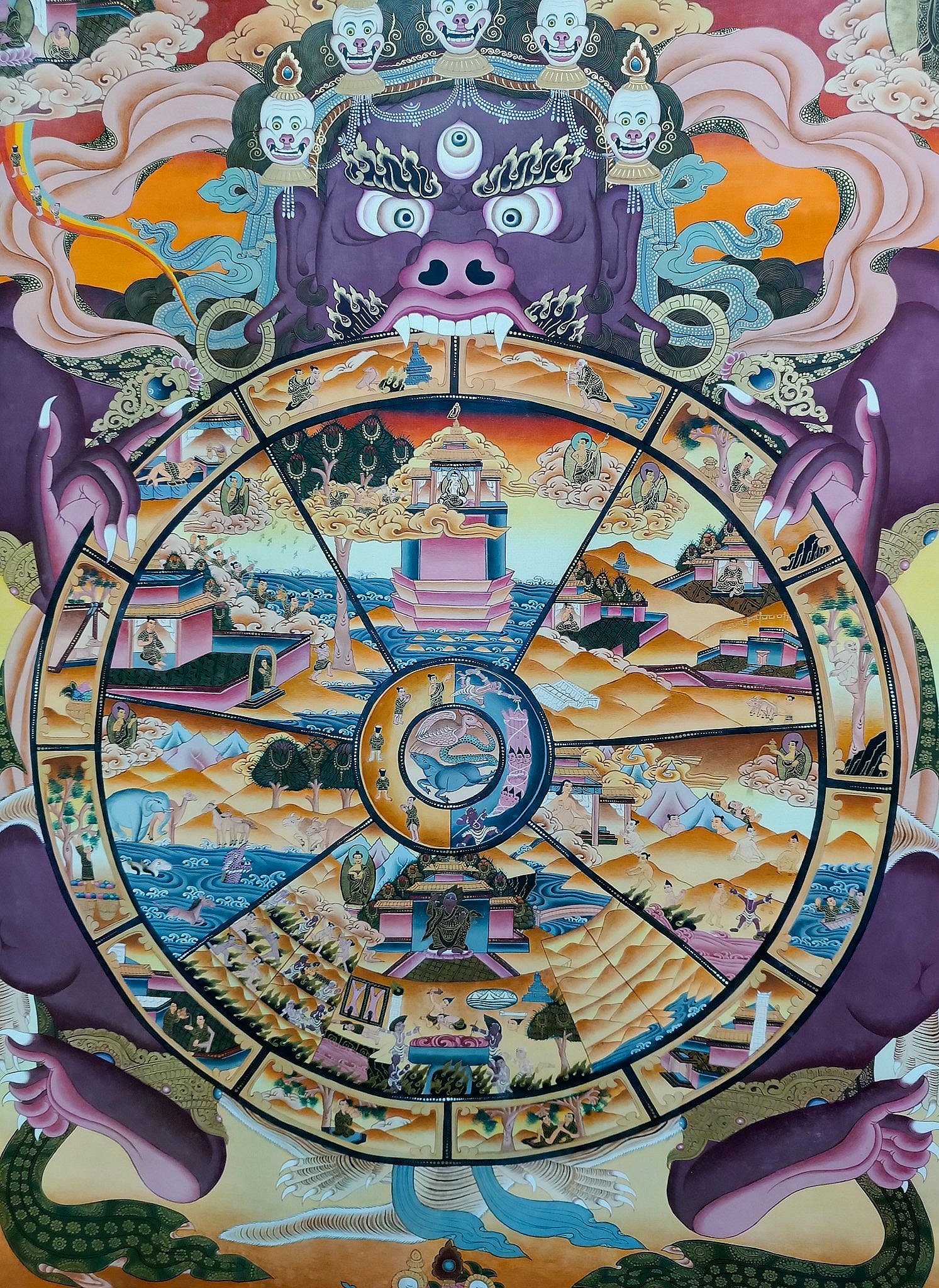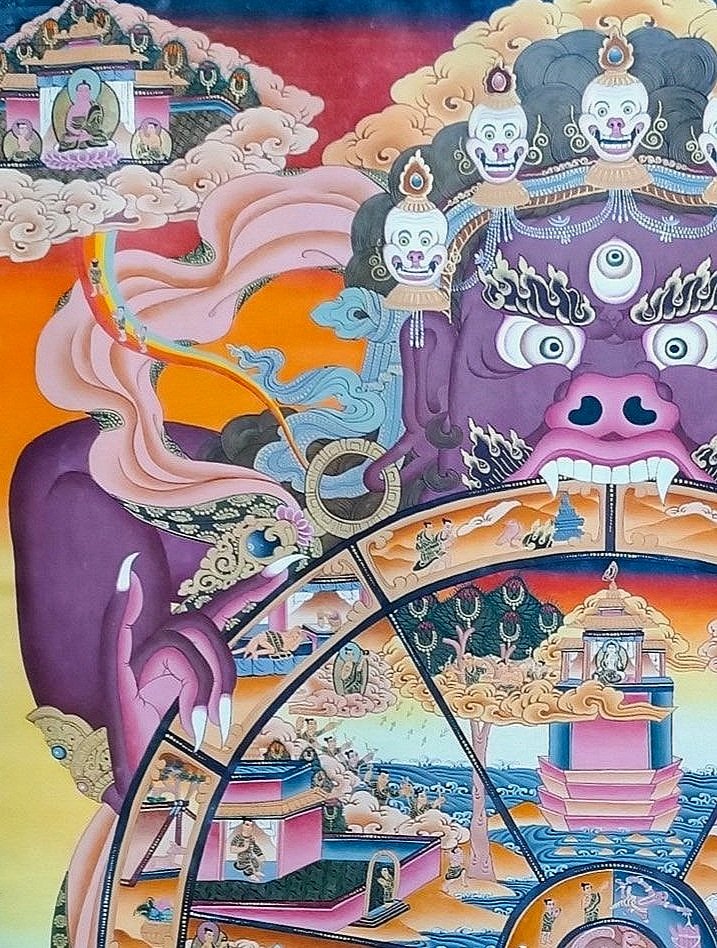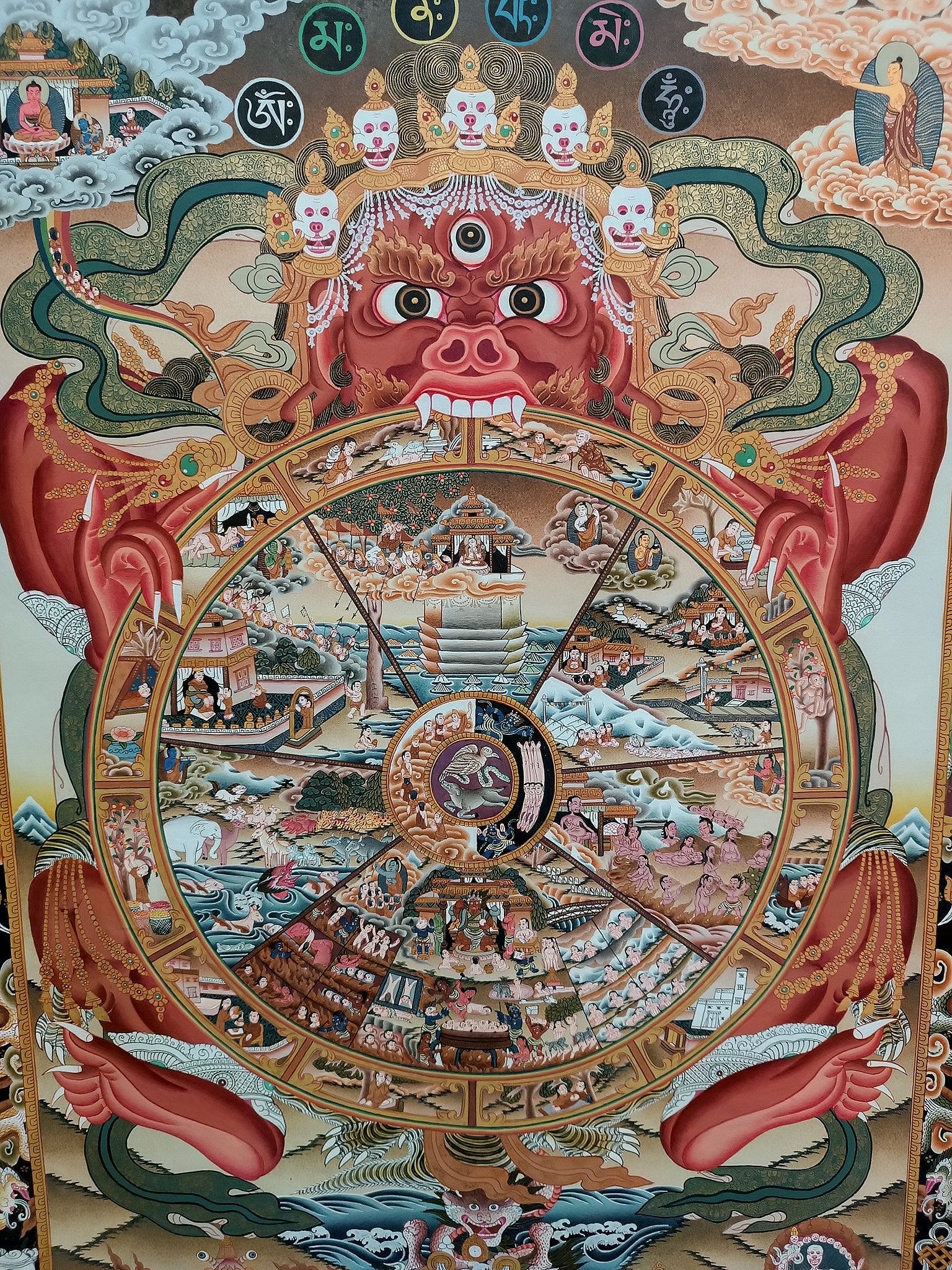 Image 1 of 5
Image 1 of 5

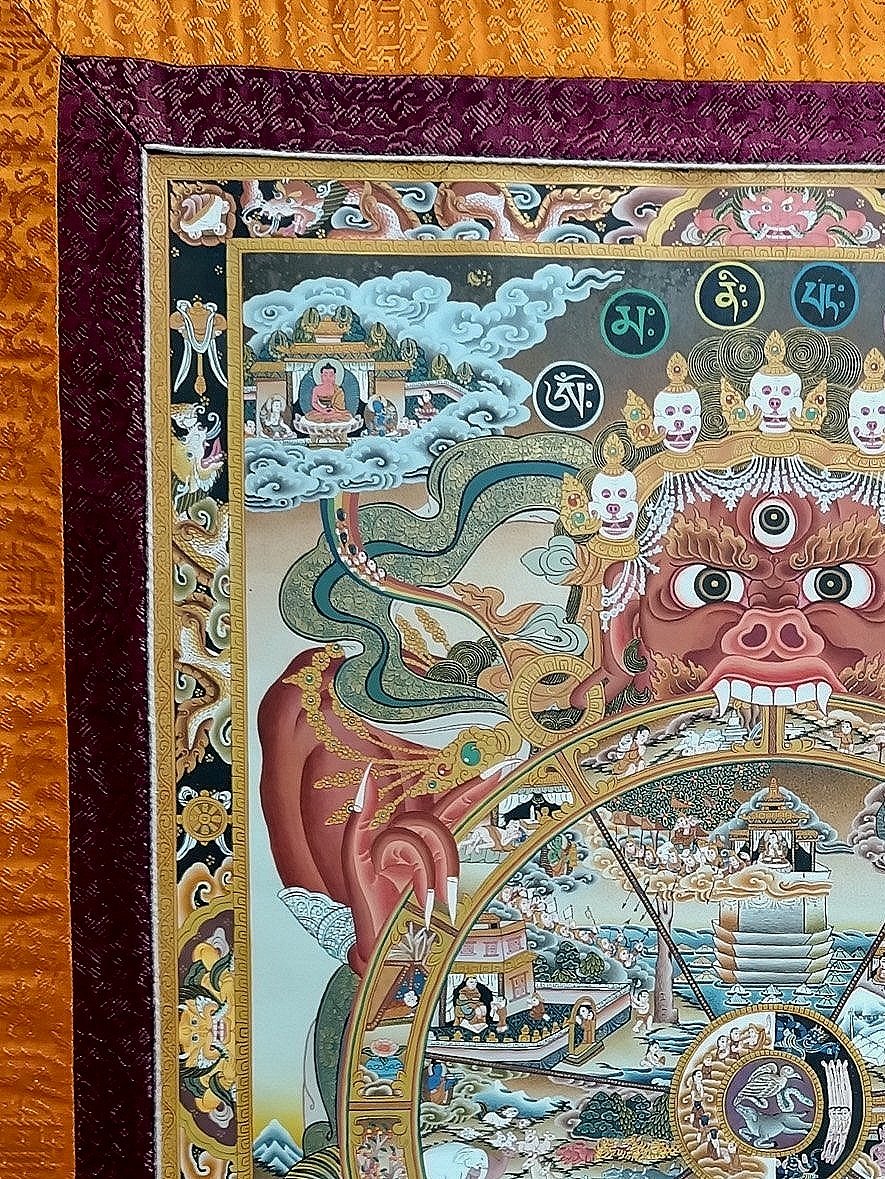 Image 2 of 5
Image 2 of 5

 Image 3 of 5
Image 3 of 5

 Image 4 of 5
Image 4 of 5

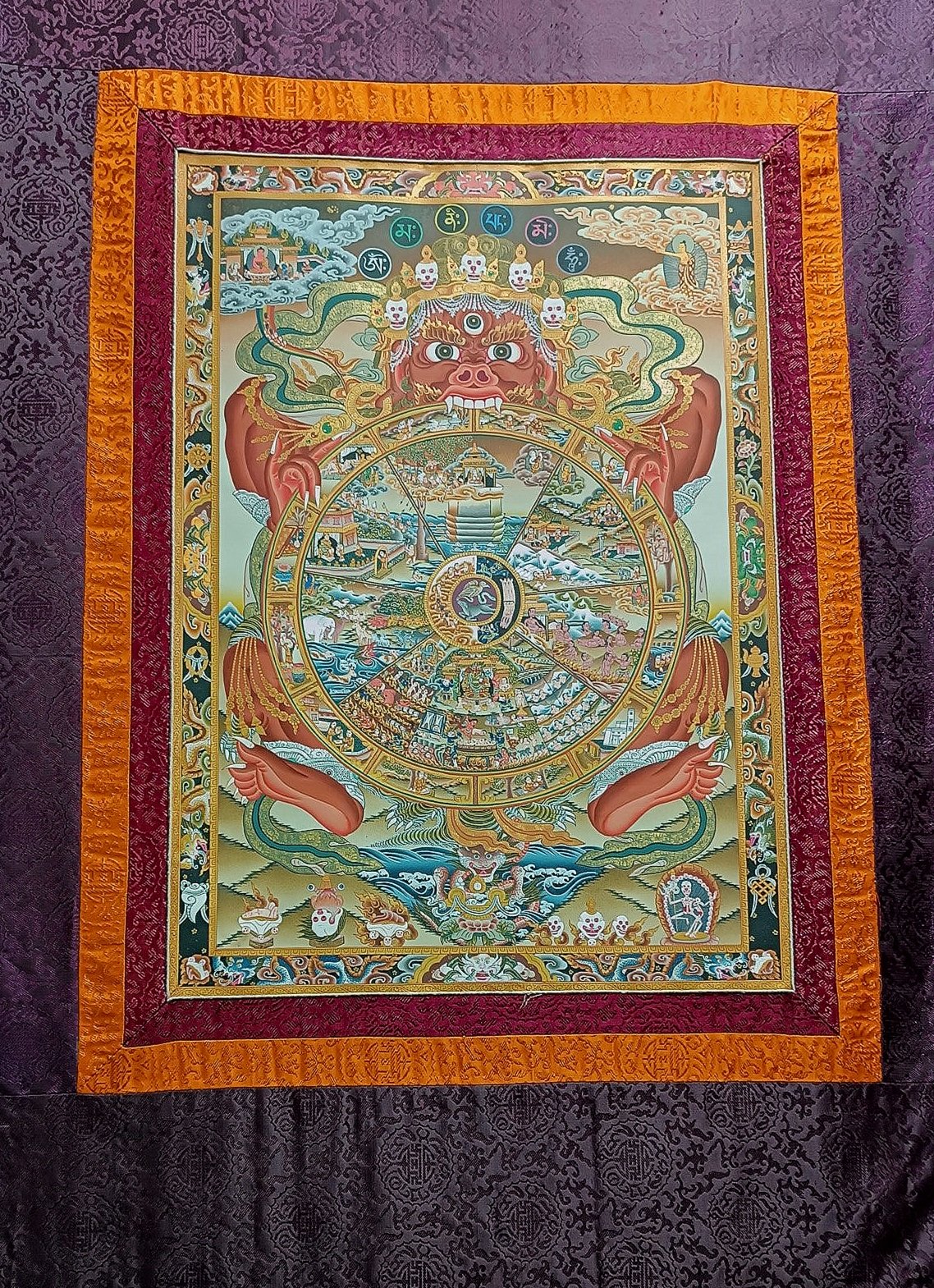 Image 5 of 5
Image 5 of 5






Wheel of life; སྲིད་པ་འཁོར་ལོ་།; 生死轮绘画和壁画
The wheel of life, also known as the wheel of samsara, can be interpreted on several levels. The six major sections represent the six realms of desire.
The world of hungry ghost
The concept of hungry ghosts refers to entities that are characterised by their insatiable hunger, often depicted with extremely thin necks that prevent them from consuming food. This imagery symbolises a profound sense of deprivation.
The hell
Hell is characterised by feelings of anger, terror, and claustrophobia. It is depicted as a place that is partly on fire and partly covered in ice. In the fiery part, known as Narksas, the souls are subjected to pain and torment, while in the icy part, they are frozen.
The world of animals
(Tiryakas) is solid, orderly, and predictable. They hold tightly to the familiar, showing a marked disinterest, if not fear, towards anything new or unknown.
The world of the humans
The human realm is considered the most conducive environment for achieving liberation and practising Dharma. While characterised by curiosity and passion, this realm also presents challenges such as hunger, thirst, and separation, leading to suffering from illness, ageing, and death.
The world of gods
The world of the gods is associated with pleasure and an illusion of eternal happiness, but it is not perfect. The gods often ignore the suffering of others and lack the drive to seek liberation from the Wheel of Life.
The realm of demi-gods
The beings in this realm are marked by hyper-competitiveness and paranoia, wielding significant power and resources in their ongoing battle with the gods. Central to their conflict is the Tree of Desire, with its roots in the Titans' domain and its fruitful canopy in the gods' territory. Their jealousy fuels this struggle, trapping them in Samsara, the cycle of rebirth. The Buddha serves as a reminder of their predicament and the need for liberation.
Hand-painted in Nepal.
The natural pigment painting measures 25 Inches by 18 Inches, with an additional silk Thangka bordering it.
The wheel of life, also known as the wheel of samsara, can be interpreted on several levels. The six major sections represent the six realms of desire.
The world of hungry ghost
The concept of hungry ghosts refers to entities that are characterised by their insatiable hunger, often depicted with extremely thin necks that prevent them from consuming food. This imagery symbolises a profound sense of deprivation.
The hell
Hell is characterised by feelings of anger, terror, and claustrophobia. It is depicted as a place that is partly on fire and partly covered in ice. In the fiery part, known as Narksas, the souls are subjected to pain and torment, while in the icy part, they are frozen.
The world of animals
(Tiryakas) is solid, orderly, and predictable. They hold tightly to the familiar, showing a marked disinterest, if not fear, towards anything new or unknown.
The world of the humans
The human realm is considered the most conducive environment for achieving liberation and practising Dharma. While characterised by curiosity and passion, this realm also presents challenges such as hunger, thirst, and separation, leading to suffering from illness, ageing, and death.
The world of gods
The world of the gods is associated with pleasure and an illusion of eternal happiness, but it is not perfect. The gods often ignore the suffering of others and lack the drive to seek liberation from the Wheel of Life.
The realm of demi-gods
The beings in this realm are marked by hyper-competitiveness and paranoia, wielding significant power and resources in their ongoing battle with the gods. Central to their conflict is the Tree of Desire, with its roots in the Titans' domain and its fruitful canopy in the gods' territory. Their jealousy fuels this struggle, trapping them in Samsara, the cycle of rebirth. The Buddha serves as a reminder of their predicament and the need for liberation.
Hand-painted in Nepal.
The natural pigment painting measures 25 Inches by 18 Inches, with an additional silk Thangka bordering it.





